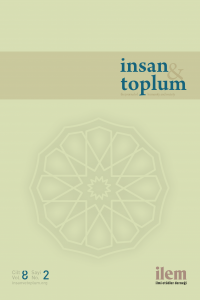Abstract
1963’te Mısır’da kurulan Mit Ghamr Tasarruf Bankası yaygın bir şekilde dünyadaki ilk İslami bankacılık örneği olarak sunulsa da henüz derinlemesine bir incelemeye tabi tutulmamıştır. Bu boşluğu doldurmak amacıyla yazılan bu makale Mit Ghamr’i beş alt başlık altında incelemektedir; banka hakkında genel bilgi, yapısı nasıldı, sonuçları neler oldu, neden kapatıldı ve ardından neler oldu. Bankayı bu alt başlıklar altında incelerken konuyu doğrudan veya dolaylı yoldan ele alan hemen her literatür kaynağı dikkate alınmaya çalışıldı. Bunu takiben her bir literatür kaynağı, kaynağın güvenilirliği, delilleri kullanışı ve çıkarımlarına dayalı eleştirel bir analize tabi tutuldu. Güvenilirliği test ederken El-Nejjar’ın kendisine ait notların yer aldığı Türkçe bir kitap özellikle baz alındı. Sonuçta, bankanın günümüz İslami bankaları için hangi açılardan yinelenemez bir ütopya, hangi açaılardan ise bir rol model olduğu özetlendi.
Keywords
Mit Ghamr Tasarruf Bankası rol model ütopya İslami bankacılık katılım bankacılığı eleştirel analiz literatür taraması.
References
- Ahmed, H. (2002). A microeconomic model of Islamic banking. Research Paper Islamic Research and Training Institute,59,
- Alharbi, A. (2015). Development of Islamic banking system. Journal of Islamic Banking and Finance, 3 (1), 12-25.
- Al-Marwyne, M. (1985). Islamic bank and its areas of work: comparative study, Master’s Thesis, Umm AlQura, Makkah.
- Alonso, I. M. (2015). Mit Ghamr: Pioneer in Islamic Banking, 10th International Conference on Islamic Economics and Finance, 23-24 March in Doha, Qatar.
Abstract
Despite Mit Ghamr Savings Bank being established in 1963 in Egypt and being commonly mentioned as the first example of Islamic banking in the world, it is yet to be analysed in depth. With the aim of filling this gap in literature, this paper analyses Mit Ghamr under five sub-sections; general information about the bank, how its structure was, what the results were, why it was closed, and what happened afterwards. In analysing the bank according to these sub-sections, it is attempted to utilize the ample amount of existing literature directly or indirectly related to the subject. Then, a critical analysis is conducted for each literature source depending on the authenticity of their sources, their use of evidence, and implications. While checking the authenticity, we particularly referring to an edited book written in Turkish including personal notes of Al-Najjar. In the end, we summarize in which aspects the bank seems to be an irreplicable utopia, or a role model.
Keywords
: Mit Ghamr Savings Bank role-model utopia Islamic banking participation banking critical analysis literature review.
References
- Ahmed, H. (2002). A microeconomic model of Islamic banking. Research Paper Islamic Research and Training Institute,59,
- Alharbi, A. (2015). Development of Islamic banking system. Journal of Islamic Banking and Finance, 3 (1), 12-25.
- Al-Marwyne, M. (1985). Islamic bank and its areas of work: comparative study, Master’s Thesis, Umm AlQura, Makkah.
- Alonso, I. M. (2015). Mit Ghamr: Pioneer in Islamic Banking, 10th International Conference on Islamic Economics and Finance, 23-24 March in Doha, Qatar.
Details
| Primary Language | English |
|---|---|
| Subjects | International Relations |
| Journal Section | Research Articles |
| Authors | |
| Publication Date | June 1, 2018 |
| Published in Issue | Year 2018 Volume: 8 Issue: 2 |

